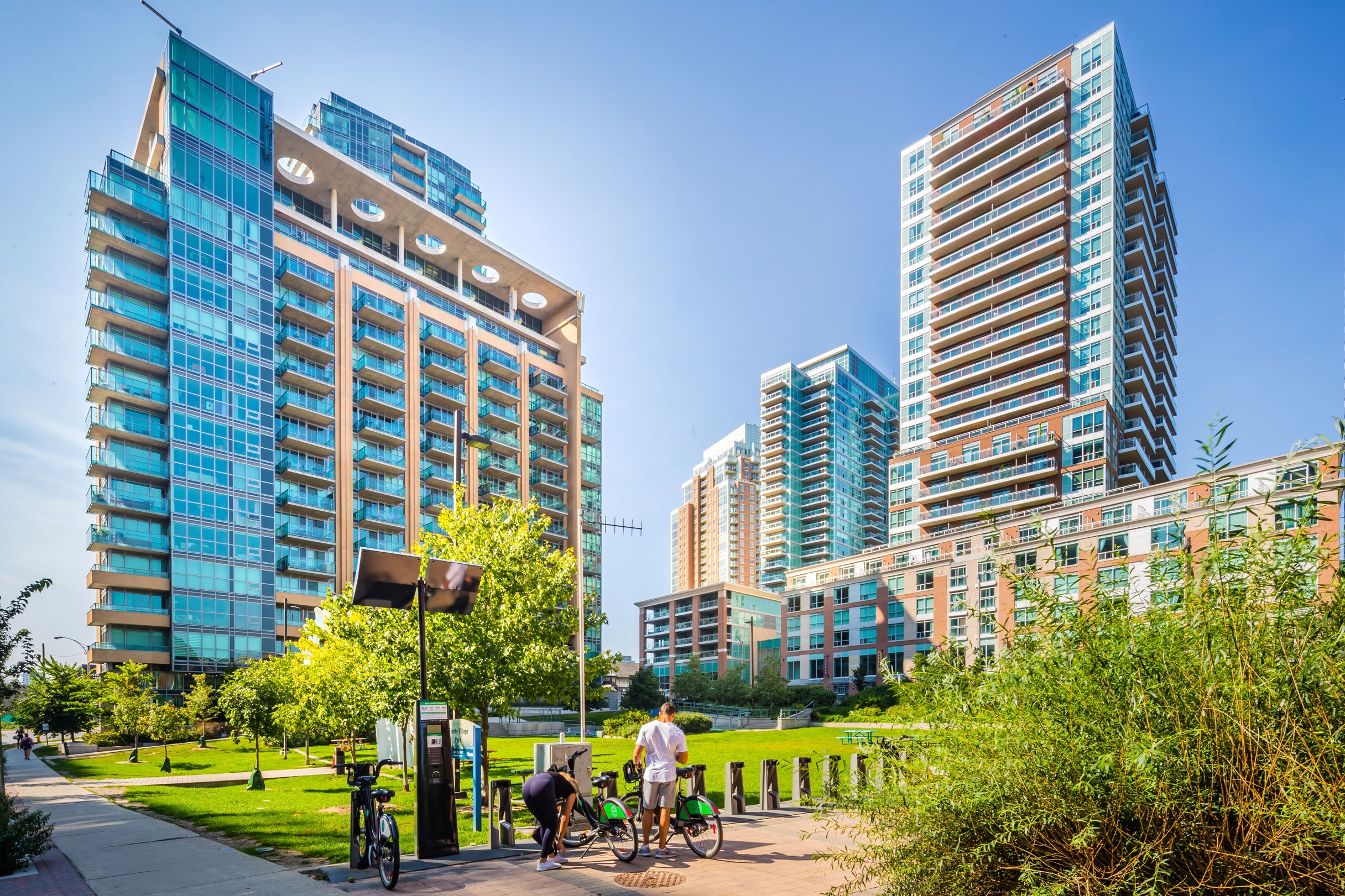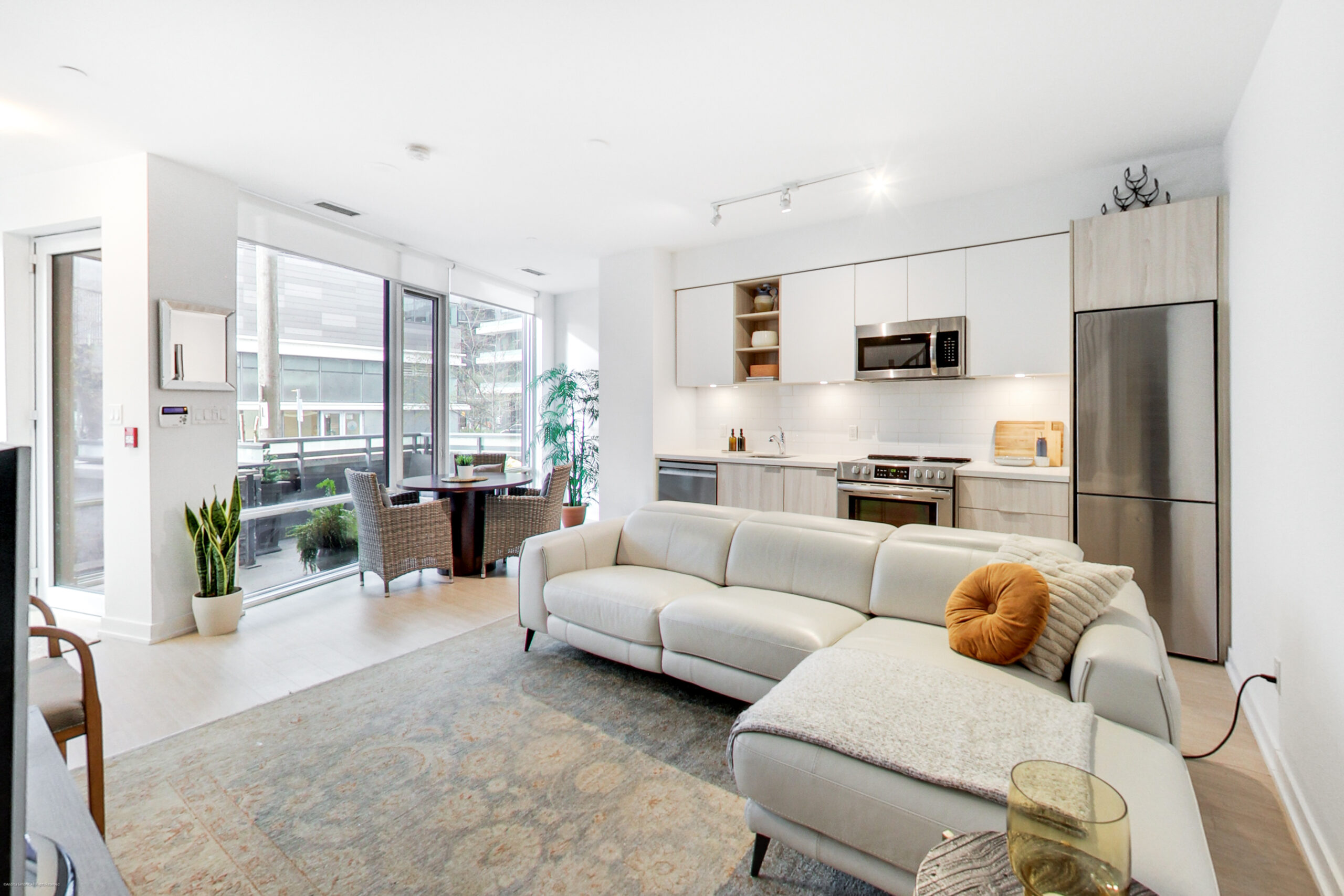
The proposals put forth for the King Street re-design set to be considered throughout the next year has many residents of Liberty Village thinking about how this could impact the neighborhood. If you are a car owner in Liberty Village or have driven into the neighborhood, you are already painfully aware of the congestion present, the lack of street space, and the lack of organization as it pertains to how cars are supposed to travel through in addition to how delivery drivers are supposed to unload their goods.
Liberty Village Today and Tomorrow
There has long been debates on re-designing Liberty Village or at least parts of it to make it more pedestrian-friendly and to learn how to better accommodate vehicle flow. The first aspect of figuring out the issue of cars in Liberty Village is the significant rise in population – between 2006 and 2012, Liberty Village alone saw a rise in population of 143 percent. As more development comes to the area, the neighborhood is expected to continue to grow. Even if that growth slows down, it means more people and with more people, comes more cars. Therefore the question becomes how do cars get in and out in the safest, most efficient possible manner?
Does Liberty Village Need a Change?
There are passionate people on both sides of the debate. There are drivers concerned about not having enough road to efficiently travel on, angered by the City of Toronto’s increased focus on expanding transit lines at the expense of space for cars. Then, there are pedestrians and bicyclists who are passionately for more road space. Then, there are a lot of people somewhere in the middle. The ultimate solution, as can be agreed on by most everyone, is to find the right combination that respects the rights of pedestrians, bicyclists, public transit users, and driver. Though the end point we can all agree on, how to get there is a matter of debate!
There has been frustration on all sides – pedestrians with stories of either being hit or almost being hit by cars; drivers frightened that they are going to hit someone; delivery drivers with little place to park; and bicyclists attempting to get from point A to point B with no room on the road for them.
Discussing if cars are taking up too much space on the road in Liberty Village, the answer is a little complicated. Liberty Village is not built like other neighborhoods in the sense that the street level parking is clumsy and plugs up the roadways, there is a significant lack of underground parking available, and the roads themselves are plagued with signage and construction at times that has made things worse at certain times of year.
The solution to these issues is going to be either one of two things, the first of which is eliminating cars altogether and making this a car-free zone – which evidently is not going to work for the many people who use their cars in the neighborhood. Or, the solution is going to be about addressing the massive parking issues here as well as re-designing the signage arrangements and streets to ensure that cars are able to get in and out efficiently. Most importantly, the rights of pedestrians must be protected and safety must be upheld as all of this is ongoing. There needs to be an effort to ensure that the neighborhood is supplied with better transit, something that the city is currently working on which may help with keeping some cars off the road.
How will the King Street re-design impact Liberty Village
The King Street re-design could actually contribute to congestion in and around Liberty Village in a negative way, depending on what that re-design is. There are drivers that may avoid King Street and/or be encouraged to turn off into Liberty Village to get somewhere, thereby growing the problem potentially. It is hard to gauge how the King Street re-design will impact Liberty Village as it is still in the exploratory stages but it will be interesting to see its impact and how current transit plans for Liberty Village adapt to suit those.
Is there a Right or Wrong Answer?
If it was possible to start from scratch in street design, the entire city would look significantly different. That luxury doesn’t exist though. Also, further complicating things is that what might be an adequate solution today might not be right for ten years down the line when the living conditions are different. This is precisely the issue currently. The streets of Liberty Village were built, much like many parts of the city, representing a Toronto of the past. The answer to car woes in Liberty Village is not clear and it is going to take much effort to get to a place where cars are able to move more safely in and out of the neighborhood – a major challenge that the city must tackle in the years to come.



